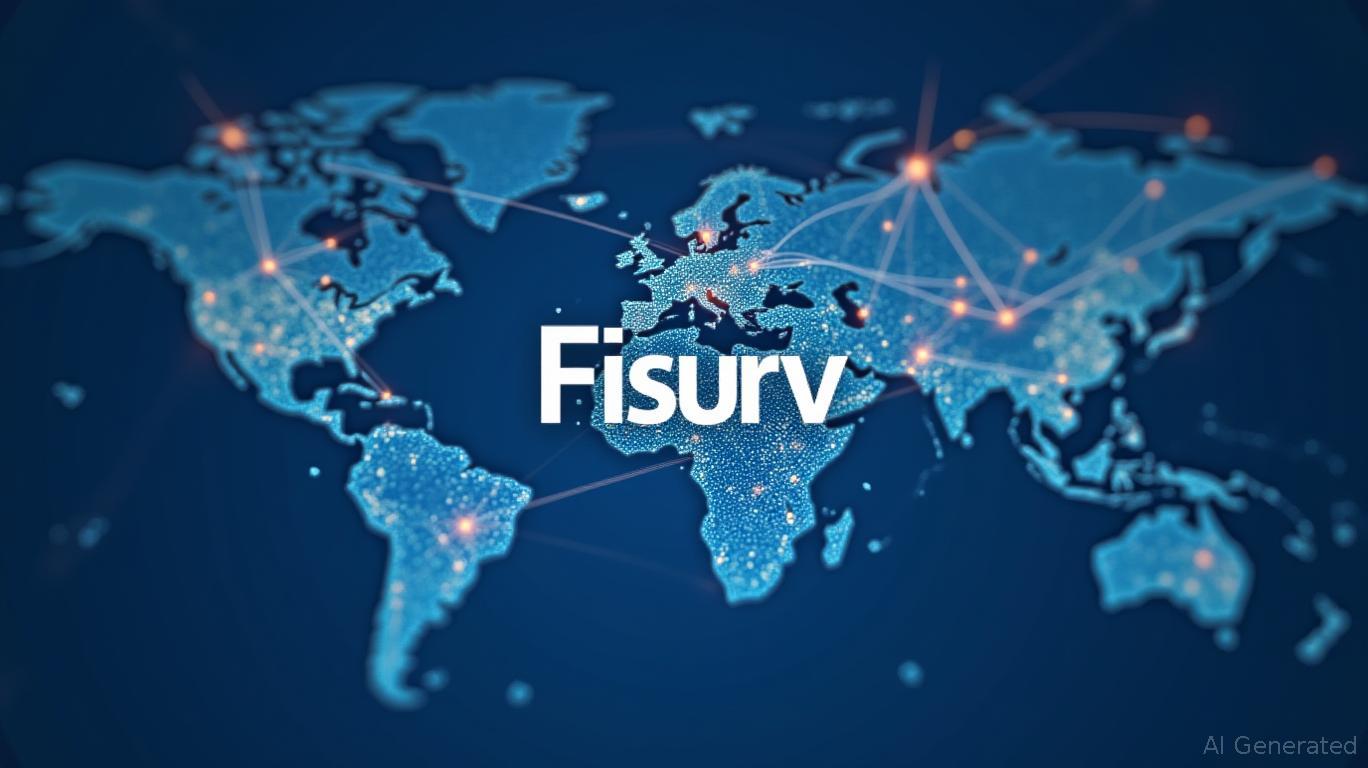Fiserv's FIUSD Stablecoin: A Blueprint for Blockchain Adoption in Banking
Harrison BrooksMonday, Jun 23, 2025 8:45 am ET
Fiserv's June 23, 2025, announcement of its FIUSD stablecoin marks a pivotal moment in the integration of blockchain technology into traditional financial systems. By leveraging strategic partnerships and rigorous regulatory compliance,
### Strategic Partnerships: Building a Scalable Ecosystem
Fiserv's FIUSD initiative is underpinned by collaborations with industry pioneers Paxos and Circle, two firms synonymous with regulated stablecoin infrastructure. Paxos brings its expertise in compliance-driven issuance and payments platforms, while Circle's dominance in the $50+ billion stablecoin market ensures interoperability with existing networks like USDC. Together, these partnerships enable FIUSD to operate seamlessly on the Solana blockchain, chosen for its low fees, high throughput (50,000+ transactions per second), and real-time settlement capabilities.
The integration of FIUSD into Fiserv's existing platforms—such as its cloud-native Finxact core processing system—creates a unified ecosystem for 10,000 financial institutions and six million merchants. This reach is critical, as Fiserv's network processes 90 billion transactions annually, giving FIUSD immediate scale.

### Regulatory Compliance: A Necessity, Not a Hindrance
The U.S. Senate's passage of the GENIUS Act (2025) in June 2025 imposes strict requirements on stablecoin issuers, including 100% reserve backing, monthly audits, and Treasury oversight. Fiserv's platform is designed to meet these standards through built-in features like fraud monitoring, risk management tools, and settlement controls. By embedding compliance into its Software Development Kit (SDK), Fiserv allows banks to adopt FIUSD without overhauling their existing systems.
This proactive approach is critical. As the House debates its own STABLE Act, Fiserv's alignment with federal guidelines positions it to thrive regardless of regulatory outcomes. The company's emphasis on no additional costs for clients further reduces barriers to adoption, a stark contrast to competitors requiring premium fees for blockchain integration.
### Market Opportunity: A $100+ Billion Payment Infrastructure Play
Fiserv's move taps into a $1.3 trillion global payments market, where blockchain-based solutions are projected to capture a growing share. With FIUSD, banks can reduce settlement times from days to seconds, cut cross-border fees, and access real-time liquidity.
Investors should note Fiserv's 20% year-over-year revenue growth in digital solutions (2024) and its 90%+ client retention rate, signaling strong demand for its infrastructure. The addition of FIUSD could expand this base, particularly among mid-sized banks seeking blockchain capabilities without building them in-house.
### Risks and Considerations
While Fiserv's strategy is compelling, risks remain. The House's STABLE Act could introduce stricter oversight or fees, potentially delaying FIUSD's rollout. Competitors like Ripple (XRP) and Meta's Diem also pose threats, though Fiserv's institutional relationships provide a moat. Additionally, the Solana network's energy usage (though lower than Ethereum's) may face scrutiny as ESG standards tighten.
### Investment Thesis: A Buy with a Long-Term Horizon
Fiserv's FIUSD launch is a defensive growth play in a sector transitioning to real-time, blockchain-enabled payments. For investors willing to overlook near-term regulatory noise, Fiserv's scale, partnerships, and compliance-first approach position it to dominate a $100+ billion opportunity.
Buy recommendation: Accumulate shares at current valuations (P/E ~25x), targeting a 30% upside if FIUSD achieves 10% penetration of its merchant base by 2026. Monitor regulatory approvals and partnerships with PayPal or card networks for catalysts.
In conclusion, Fiserv's FIUSD is not merely a product but a blueprint for how legacy financial systems can evolve. By marrying blockchain's efficiency with ironclad compliance, Fiserv is setting the standard for the next era of payments—and investors would be wise to follow its lead.
Disclaimer: The news articles available on this platform are generated in whole or in part by artificial intelligence and may not have been reviewed or fact checked by human editors. While we make reasonable efforts to ensure the quality and accuracy of the content, we make no representations or warranties, express or implied, as to the truthfulness, reliability, completeness, or timeliness of any information provided. It is your sole responsibility to independently verify any facts, statements, or claims prior to acting upon them. Ainvest Fintech Inc expressly disclaims all liability for any loss, damage, or harm arising from the use of or reliance on AI-generated content, including but not limited to direct, indirect, incidental, or consequential damages.

Comments
No comments yet